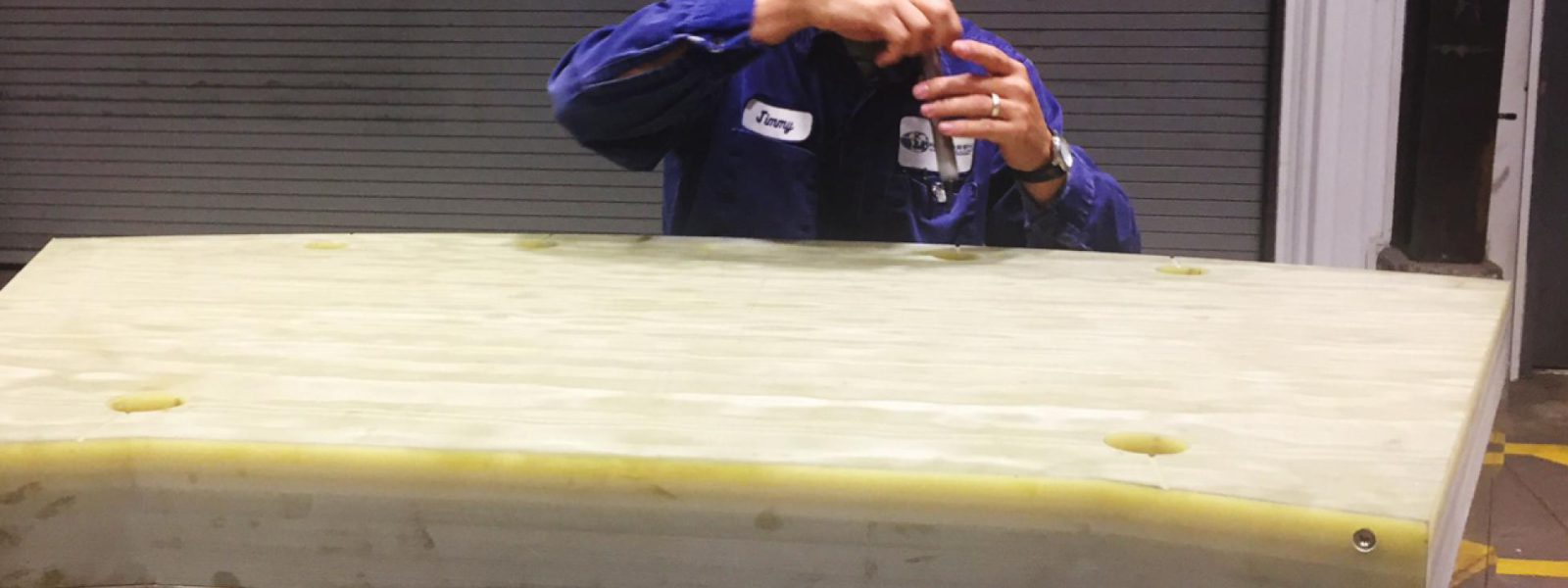US ITER has started delivery of lower support structures for the central solenoid, the world’s largest electromagnet that will be at the center of the ITER fusion machine. The support structures provide a secure base and cage for the central solenoid in the face of thousands of tons of force. The first delivery, a lower key block weighing over 6 tons, was delivered in February to the ITER site in St. Paul-lez-Durance, France. Eight more lower key blocks are now being shipped. A total of 18 upper and lower key blocks will be delivered by the end of the year.
The fabrication of these components was a coordinated effort by US ITER and its vendors, as the key blocks were forged by Scot Forge in Spring Grove, IL and machined by Petersen, Inc. in Ogden, Utah. The lower key blocks serve as the primary base support for the 1000 ton central solenoid magnet.
“Petersen overcame some early challenges with machining the high strength Nitronic-50 stainless steel forging. They succeeded in producing high precision, feature-rich components of extremely high quality,” said Travis Reagan, a US ITER project engineer.
The central solenoid magnet—known as the heart of ITER—is comprised of six vertically-stacked modules surrounded by a pre-compression support structure. The support structure is essential because the magnetic forces affecting the central solenoid can be very large. Before operation, preload forces of 210 meganewtons—roughly six times the thrust of the first stage of a Saturn V rocket—are applied to the assembly in order to be certain that vertical gaps and stresses do not develop between adjacent modules. The support structure then ensures that the internal magnetic forces within the central solenoid do not overcome the preload forces.

The structure also ensures that the 18 meter tall magnet remains aligned and secure during intensive cycling with peak fields of over 13 Tesla. The support structures must endure high mechanical stresses in the ITER environment and resist fatigue and crack growth from cycles at cryogenic temperatures. The chosen material for most of the support structures is high-strength super-austenitic stainless steel (Nitronic 50).
The superconducting central solenoid will provide the magnetic flux swing required to induce up to 15 million amps of plasma current. During operations, the force swing in the structures is on the order of 100 meganewtons. The tie plates must endure these forces for 60,000 cycles.
The lower key blocks are part of the lower support system of the central solenoid. Other major components of the lower support system include nine flex brackets, which support the weight of the magnet assembly and must accommodate the net vertical electromagnetic loading. The brackets have been designed to withstand loading events up to 180 meganewtons. The lower support components were forged at Forge Monchieri in Cividate Camuno, Italy before transfer to Precision Custom Components in York, Pennsylvania for machining.

Load distribution plates are used to transfer the loads from the tie plates to the upper and lower key blocks through the flex brackets; fabrication of the load distribution plates is underway at Hamill Manufacturing in Trafford, PA.
Around the modules, eighteen 18-meter tall tie-plates are attached to the outside of the modules and nine tie-plates are on the inside. The tie-plates are secured to the upper and lower supports. First article tie-plates were fabricated by Major Tool and Machine in Indianapolis, Indiana and Precision Custom Components.
US contributions to ITER are sponsored by the U.S. Department of Energy Office of Science and managed by UT-Battelle at Oak Ridge National Laboratory in Tennessee, with contributions by partner labs Princeton Plasma Physics Laboratory and Savannah River National Laboratory. For more information, see https://usiter.org. The Office of Science is the single largest supporter of basic research in the physical sciences in the United States, and is working to address some of the most pressing challenges of our time. For more information, please visit https://science.energy.gov.
Media Contact: Lynne Degitz or @US_ITER
